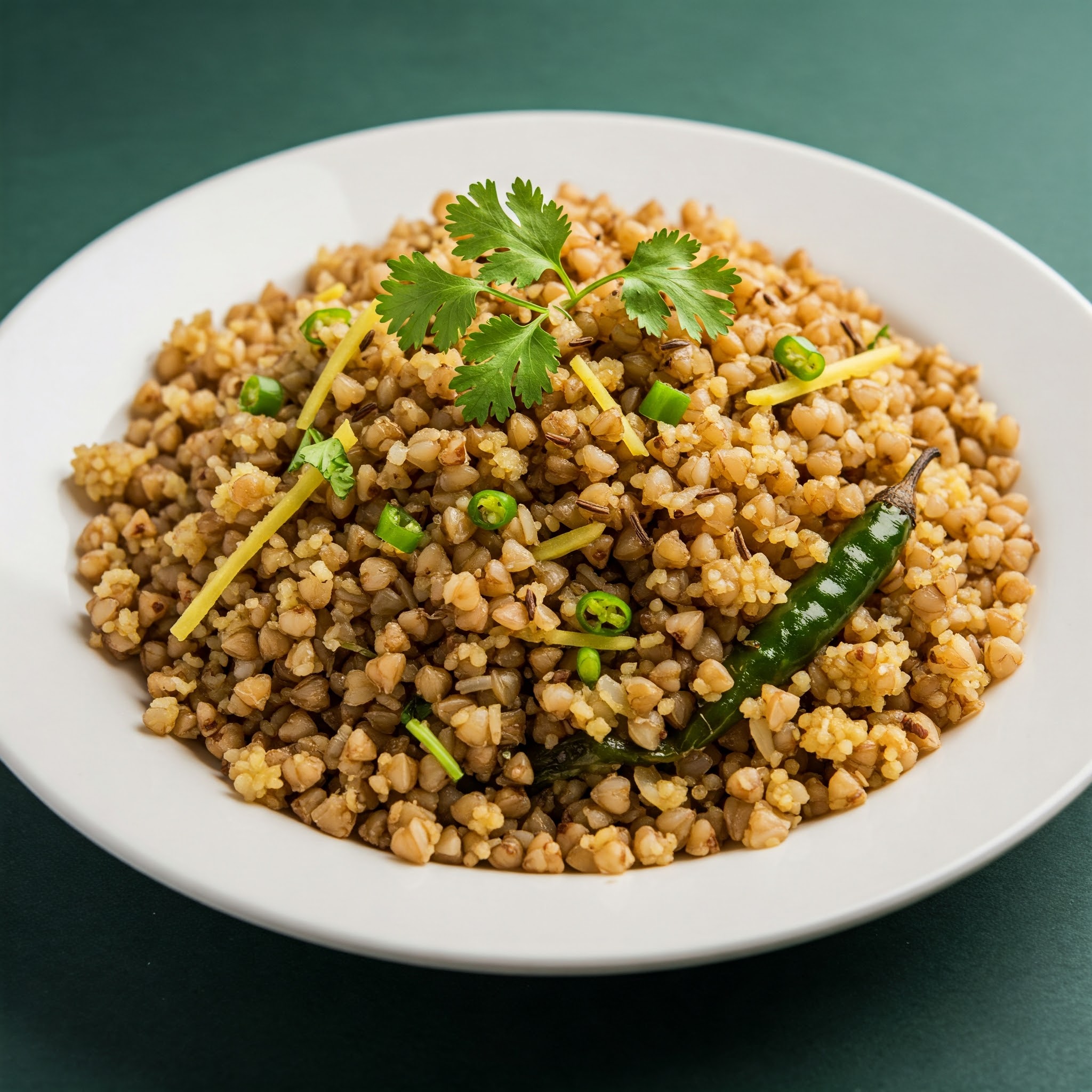Brown Sugar (भूरी चीनी, ब्राउन शुगर)
Raw cane sugar

About Brown Sugar
Brown sugar, with its warm, caramel hues, embodies the essence of tradition and nourishment in Indian cuisine. It is not just a sweetener; it is a culinary gem that whispers tales of heritage in every grain. Unlike refined sugar, brown sugar retains a touch of molasses, which enriches its flavor profile, lending a delightful depth to desserts and savory dishes alike.
Imagine a warm bowl of kheer, its creamy texture beautifully complemented by the rich sweetness of brown sugar, or a luscious halwa, where each bite melts in your mouth, leaving behind a lingering taste of nostalgia. This natural sweetener, rich in minerals like iron and calcium, brings both flavor and health benefits to the table, making it a cherished choice in every Indian household.
Beyond the kitchen, brown sugar's allure lies in its versatility. From the sweetness in chai to the glaze on roasted vegetables, it enhances flavors while maintaining a balance that refined sugars often lack. In desserts, it introduces a comforting caramel note that elevates every creation, turning ordinary recipes into extraordinary delights.
To include brown sugar in your daily menu, log on to planmeal.com, where meal planning becomes an art, tailored to your tastes and nutritional needs. Discover how this humble ingredient can transform your culinary adventures, bringing sweetness and health to your family’s table.
Embrace the magic of brown sugar—nature’s sweet gift for every palate!
Brown sugar is an essential ingredient in many culinary traditions, offering a natural sweetness with a hint of molasses that enhances flavors in both sweet and savory dishes. It contains minerals such as iron, calcium, and magnesium, making it a slightly healthier alternative to refined white sugar.
In baking, brown sugar adds moisture and depth, contributing to the texture and richness of recipes like cookies, cakes, and sauces. Additionally, its unique flavor profile makes it a popular choice for marinades, dressings, and glazes.
In moderation, incorporating brown sugar into a balanced diet can provide flavor and complexity to meals while offering some nutritional benefits.
How to Store Brown Sugar
To store brown sugar effectively, begin by placing it in an airtight container to keep moisture out. Glass jars or plastic containers with tight-fitting lids work well. Ensure the container is kept in a cool, dry place away from direct sunlight, as heat can cause the sugar to harden. If you notice the sugar has hardened, you can soften it by adding a slice of bread or a few marshmallows to the container, sealing it for a day. For long-term storage, consider refrigerating the sugar in a sealed bag, ensuring it's thoroughly dry before sealing to prevent clumping.
Shelf Life of Brown Sugar
Brown Sugar has a shelf life of about 2 years when stored properly. Keep it in an airtight container in a cool, dry place to prevent moisture absorption and clumping.
How to Check Brown Sugar Before Buying
When checking brown sugar before purchasing, examine its texture and color. Quality brown sugar should have a moist, soft texture and a rich, uniform color. Look for any signs of clumping, which may indicate moisture exposure. Smell the sugar; it should have a pleasant, molasses-like aroma without any off-putting scents.
Check the packaging for a production date and ensure there are no tears or damage. If possible, taste a small sample to assess its sweetness and flavor profile.
Procuring brown sugar in bulk can be advisable if you use it frequently, as it can be more cost-effective. However, ensure you have proper storage containers to keep it dry and prevent clumping. If you don’t use it often, buying smaller quantities might be a better option to maintain freshness and quality.
Explore
Explore our services and take your business to the next level.
Recent Posts

Halwa is the perfect addition to a balanced weekly menu, offering both taste and...

Tamarind Tomato Salad is the perfect addition to your weekly meal plan, offering...

Kuttu Ke Chawal (Buckwheat Rice) is the perfect dish to add variety to your week...

Barley Chilla is a wholesome, nutrient-packed dish that can easily be incorporat...

Mix Dal Quinoa Cheela is the perfect blend of protein-packed dals and nutritious...
Ready for a Healthier You?
Take control of your wellness! Get a customized meal plan that fits your lifestyle. It's time to eat smarter, feel better, and transform your life!
Get Your Plan Now!Already a member? Login and start now!
Nutrition Facts
Serving Size:
Servings Per Container: 1
| Amount Per Serving | ||
|---|---|---|
| Calories | 380 | |
| Fat | ||
| Saturated Fat | ||
| Trans Fat | ||
| Cholesterol | 0 | |
| Sodium | 2 | |
| Carbs | 97.33 | |
| Fiber | ||
| Sugar | 0 | |
| Protein | 0.1 | |
| VitaminD | ||
| Calcium | 3 | |
| Iron | .1 | |
| Potassium | 80 | |
* Percent Daily Values are based on a 2000 calorie diet.
* Percent Daily Values are based on a 2000 calorie diet.

